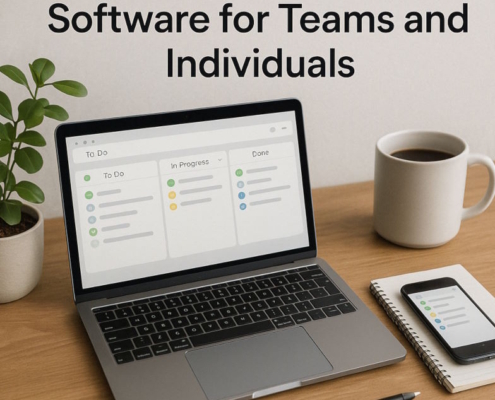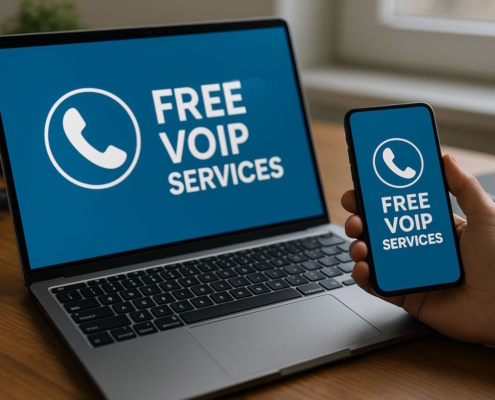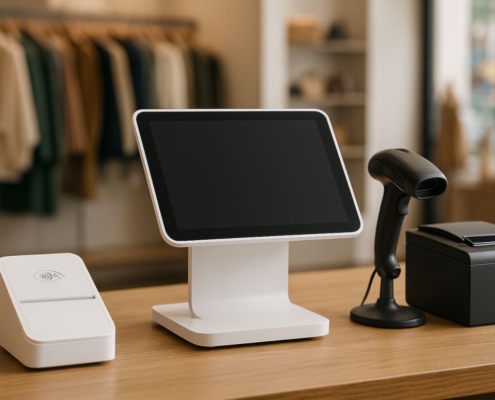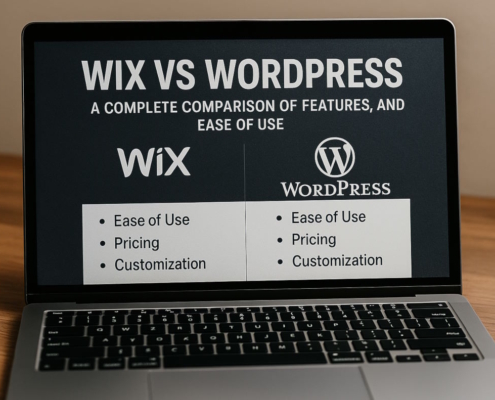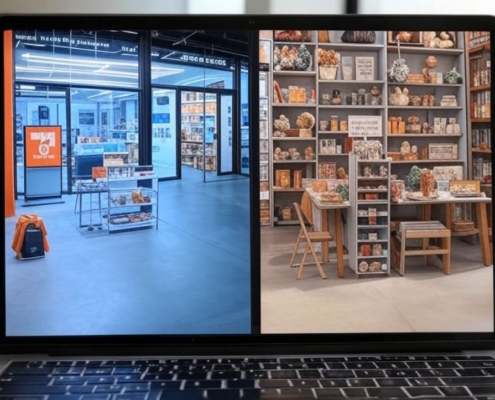Introduction
If you dedicated an hour to a client project but didn’t track it with a timer, can you really say you worked? (Isn’t that how the saying goes?)
My responsibilities as a freelancer include handling all client work, marketing, record-keeping, and administrative duties. To ensure that I don’t overbook my schedule or undercharge for my services, I maintain thorough records of the duration of each business assignment and client project. Knowing how you invest your time, however, gives you vital insight into—and command over—where you expend your energy, regardless of whether you’re a 9–5 office worker or a solopreneur like myself.
Time-tracking applications facilitate the process of recording billable hours, optimize business operations, and enhance individual productivity. In addition to having built-in timers, the finest time trackers allow you to manually edit and add time. You can concentrate on in-depth work and save statistics for later with some of these types of apps, which even use artificial intelligence for a detached monitoring approach.
Following several weeks of intensive testing, I’ve compiled the top time tracking applications for individuals as well as teams so you may choose the one with the features and interface that most closely fits your working style.
The top applications for tracking time
- Use Toggl Track, an app for tracking spare time.
- HourStack to integrate with the project management system in your team
- Timely for large teams using automatic time tracking
- Memtime for more user-friendly automated time monitoring
- Using TrackingTime to display time in a unique way
- RescueTime to lessen interruptions
What characteristics distinguish the top time tracking software?
Understanding your time usage patterns allows you to examine work patterns and make more informed business decisions. A comprehensive picture of your weekly, monthly, daily, and annual workload can be obtained from time-tracking software, regardless of whether you work alone or in a small group.
With all of this data, what are you going to do? The ability to feel secure about your bills and avoid attempting to estimate the amount of time you spent after knowing it is perhaps the most significant benefit of project time monitoring: it may assist you in getting paid. When asked, “What were you focusing on this month?” as a member of a group, recording your time can be useful.
I took into account the following factors while assessing the best time monitoring apps:
- Monitoring in real time. A running timer that you may start when you begin a task and stop or pause when it’s finished is provided by almost all time tracking programs, allowing you to monitor your progress in real time.
- Being able to manually add time segments or alter the time tracked. If you make a mistake and leave the clock running as you leave for a meal, the finest apps allow you to adjust the time recorded after the fact. If there are any minutes that you were not working, you are supposed to be able to take that number out of the time log.
In the event that you completely forget to start a timer, you should also have an app that allows you to enter a period of time after the fact. If your cell phone sounds and you answer it to talk for twenty minutes, for instance, you may not set a timer, yet you should still record and charge for the hours spent.
- Features for reporting. Time spent on projects, individuals, or clients can be broken down on a monthly, weekly, or daily basis using reports and dashboards that are included in the most potent time-monitoring applications.
- Having the option to export data or generate an invoice. After you’ve tallied up all the time you’ve spent working, you need to be prepared to act on it. All of these apps allow you to put your time tracking information to Google Sheets, CSV files, or PDFs for sharing with the appropriate parties, or they can automatically generate invoices based on that data.
- Several entry points. Setting a timer is quick and simple with the greatest time-tracking tools. They’re flexible enough to allow you to set a timer from your smartphone or tablet, desktop app, or web browser, whichever suits you best.
- AI features as a bonus. Time monitoring applications are only one example of how artificial intelligence is streamlining and automating processes in all kinds of technologies. I paid particular attention to time-tracking apps that employ artificial intelligence (AI) to monitor your time or machine learning to intelligently allocate time blocks for associated jobs and projects.
What is omitted from this compilation?
Here, I made a special effort to locate a time tracker designed for small teams, individuals, and freelancers. The software I overlooked was employee monitoring, which frequently has time tracking built in. Although the data is only visible to each individual user, I did incorporate two automated tracking technologies that keep a watch on users’ activity. You have the option of sharing any or all of your managers’ data with them while using these tools.
Apps for project management, billing, or accounting that contain an add-on or integrated time tracker are also not included in my list. Time-tracking watches are a great feature of these tools, but if that’s all you need, you should probably look for a more complete option.
Are you trying to find a solution to measure time even more simply? Easily start meetings, create projects, and alert colleagues when you begin working on a task by adding automation to the time-tracking software.
The best free time tracking app
Toggl Track (iOS, Android, Windows, Linux, macOS, Web, & browser extensions)
Toggl Track is an excellent option if you require a time-tracking tool but lack the funds to purchase one. Toggl has really been an ongoing component of my freelance process until I discovered my new preferred timer while doing research for this post. In addition to having all the essential features you would anticipate from a time tracking program, the time tracking software boasts a substantial free level of service that grants you entry to all of its applications (iOS, Android, Windows, Linux, macOS, Web, & browser extensions).
Mainly since it doesn’t require a lot from you as you begin time a task, Toggl Track operates so smoothly. If you want to track time with various time-tracking applications, you usually need to add a customer, project, & task to your profile. You will have to temporarily put your tasks on hold and submit them if you don’t. Using Toggl Track, you may view your recorded time items in a calendar and grid format, record your time immediately, and stress about the details afterward.
Furthermore, a Toggl timer button appears in nearly every web application you can think of, including Help Scout and Google Docs (among other Google applications), when you utilize Toggl Track via the Chrome as well as Firefox browser extension. You have a constant reminder of when to record your time because the Toggl Track tab is constantly visible to you when working. I additionally like to have my desktop program open, so regardless of whether I set a timer from a browser window, the Mac’s menu bar will always show the running clock. I’ve been using Toggl’s timer regularly for more than three years because it is the most versatile and user-friendly tool I’ve evaluated, and it’s simple to use from anywhere.
I haven’t seen any time tracking app with as many detailed choices as Toggl Track. For instance, you may programmatically begin and end time monitoring based on whether or not the browser is active or closed using the Toggl Track Chrome extension. Additionally, you can maintain excellent precision across all of your records with its superior idle detection. When the time tracking app notices that a timer continues to function even if the computer has been inactive, it provides options to adjust the time that was recorded. Toggl Track will therefore be able to remove those twenty minutes from the log if you get interrupted as you work and end up getting drawn into a 20-minute chat. With the help of Toggl Track’s Pomodoro Technique option, you may work on a focused topic for a predetermined period of time and then take a quick break—all with stopwatch-style reminders.
Recently, Toggl improved its reporting capabilities and dashboards to allow for even more thorough data analysis. To view team summaries or weekly statistics, you may build personalized dashboards. You can subsequently produce reports that are filtered by client, team, or tag.
For whom Toggl Track isn’t appropriate: You must pay for Premium if you want more detailed insights on your work, stored reports, or billable hours, even though the free plan is straightforward and easy to set up for fundamental time reporting and tracking. You may definitely get more value for your money by using one of the other apps on our list. Furthermore, there isn’t a free task administration or planning tool, so you’ll need to go elsewhere if you need a way to plan and track the workload of your staff.
Pricing for Toggl Track: $9 per user each month when invoiced yearly for the Basic plan, featuring time rounding, billing rates, stored reports, and more. Without Charge for a maximum of five users.
Clockify is a good option if you want a straightforward time-monitoring tool without a lot of other features. Although the free plan lacks some of the functionality of Toggl Track, it comes with unlimited tracking, users, projects, and reports, all of which are free of charge.
Top time tracking app that works well with the project management software in your team
HourStack (Chrome, Web, Microsoft Edge, Firefox)
HourStack is a project time monitor that could be useful for your team to plan and monitor time if you’re searching for something that works well with your preferred project management software.
I’m still impressed by HourStack, a simple and elegant time tracker and calendar combo. The software is natively integrated with many well-known project management applications, including Google Calendar, Asana, Trello, Todoist, and Google Tasks. After establishing a connection with one of these applications, you can schedule the work of your staff by simply dragging and dropping your tasks from HourStack’s sidebar to your HourStack schedule.
And the finest aspect? Tasks marked as finished from HourStack will be reflected in your project management because of the bidirectional interface. I was astonished and thrilled by this function as an efficiency geek.
Simple design is the source of HourStack’s power. Complicated options or interfaces don’t provide a risk of overloading or diverting attention. On the Calendar screen, you can schedule and log your work hours in addition to viewing your scheduled tasks. The Reports page shows the number of activities you’ve done as well as the planned vs. logged hours. It may be filtered by customers, projects, and tags. It’s also possible to add or start monitoring project time without having to input a project or task beforehand thanks to the extensions available for Microsoft Edge, Firefox, and Chrome.
You can integrate HourStack with thousands of applications to arrange your time tracking in the most beneficial way possible. Here are a few illustrations.
For whom HourStack isn’t appropriate: Individuals who desire a mobile or desktop application. Although HourStack is very mobile-responsive, its few points of access may cause some users to feel limited. HourStack operates both in the browser as well as via browser extensions.
Pricing for HourStack: $12 per month for a single user; $15 per month for groups.
Furthermore suggested are Harvest & Everhour if you’re looking for time-tracking software designed with collaborative project management in mind. The design of both applications makes it simple and reliable to manage collaborative tasks. Harvest is an offline solution with a feature-rich free plan; both applications have several native interfaces that facilitate the scheduling of your staff’s project management software.
The best team-focused automated time tracking app
Timely (macOS, Web, Windows, Android, iOS, Firefox, Chrome)
The most effective time tracking app strives to make the process of accurately recording your time spent as simple as possible. An automatic time tracker is the most accurate and painless option available.
Memory AS’s Timely is a time-tracking tool that creates “Memories” of all the websites and applications you use throughout the day. You may then drag and drop such Memories into the projects or tasks they have been assigned whenever it’s appropriate to do so in order to generate a Timesheet.
A tool such as this can seem a little terrifying if you work for a company, but Timely is not a time tracking app for employee surveillance. You are the sole owner of the data it gathers, and you control how much of it you choose to disclose on your timesheet. Additionally, you can quickly turn off the application from the options bar if you ever want it to stop tracking your actions.
Timely’s greatest feature is how simple it is to get started utilizing it. To enable Timely to arrange appointments into your job schedule, you’ll be asked to link to your calendar and conferencing software after installing the desktop program. Additionally, adding tasks, clients, and projects is a breeze. You can even establish your hourly fee for individuals and projects.
Let the application run in the background after that. To obtain a precise and comprehensive record of your time management, allocate a few moments at the conclusion of the day to move tasks from one project to another on your time sheet. This eliminates the requirement to remember to set and stop the timer.
Even better, it keeps track of your activity while within the Chrome tab group, which I find really useful for multitasking project organization. Project assignment of tracked internet usage is made simple by this intelligent Timely feature. Moreover, within the first day, the new AI assistant begins to suggest tasks for project classification based on trends it discovers in your time tracking.
Timely provides highly personalized and in-depth reports. View unbilled time and reports for a particular project or the entire workspace with ease. Furthermore, you can design report templates with filtered views by teams, clients, projects, individuals, categories, or other criteria. Afterward, Timely integrates with QuickBooks to generate invoices and pushes them to the online version of QuickBooks when they are prepared for sending.
Timely also has a task planner option available for an extra $5 a month if you enjoy organizing your schedule. Plan your chores according to the project or the person assigned to them. After that, you can compare the planned and tracked times for each task by simply dragging and dropping your daily activities into the corresponding tasks on your Timesheet.
Timely’s emphasis on project management and team scheduling is what makes it such a wonderful option for teams. A dashboard summary of planned versus logged time, an overview by user, and a team activity report are available when you select the People tab. You may additionally search for missing and overtime hours. Timely makes it simple to discover who is over-scheduled and who has reached capacity.
For whom Timely isn’t appropriate: Users who are opposed to a program that uses AI to follow them around their computer at all times should not use Timely. Furthermore, as Timely is primarily designed for tracking and organizing computer-based work, it might not be the best option for you if you spend a lot of time working offline.
Pricing for Timely: The Starter plan costs $9 per user per month and can accommodate up to five users and twenty projects. 50 users and unlimited projects are included in the $16/user per month Premium plan.
For easier auto-tracking, choose this time tracking app
Memtime (Windows, macOS, Linux)
My current favorite auto time-tracking software of choice is Memtime (previously timeBro), which is quite new. I may stop using Toggl, which I’ve been using for years, after allowing Memtime to operate in the background while I work.
A desktop application called Memtime records your computer activities so you can group them afterward, just like Timely does. Visiting the application at the conclusion of the workday to evaluate and group together your progress will eliminate the need to remember to start and stop timers.
Memtime’s simplicity is what I adore most about it. The focus on team managing projects and timesheet production in the other auto-tracking programs I tested, including Timely, is so strong that it’s simple to get overwhelmed. Products like Timely can be excessive if, like me, you are not working on assignments with others or submitting thorough time sheets to your manager.
The layout of Memtime is far simpler; it features an activity log that is always updating, an area where you are able to write entries, and a summary of the tasks you completed during the day. Additionally, there’s a project management page where you can manually add clients & projects, or transfer them from different apps, as well as a reporting page that displays productivity metrics. In order to observe events alongside recorded activities, you may also link Memtime with your personal calendar.
It’s simple to add fresh entries to the Timeline view by clicking on the timeline and dragging the pointer to change the entry’s length. Five-minute intervals are displayed on the screen (you can select a one-minute split if you’d rather be more specific and are okay with scrolling). As a substitute, you can log more actions by dragging and dropping them into the List view.
Remember that Memtime does not support web access or mobile apps; it is only compatible with desktop apps. Furthermore, I discovered that Timely’s overall recorded work time was more accurate than Memtime’s, as it utilizes five-minute segments by standard in the Timeline view. However, the ease of Memtime makes up for the cost, as I’m only tracking for myself.
I wholeheartedly advise giving Memtime a go if you want to dabble in automatic time-tracking without being overtaken by team and project management tools.
Memtime isn’t appropriate for: People who aren’t interested in an artificial intelligence program to monitor their online habits. Furthermore, the solution is a bit too simple for teams; if you need an app for mobile devices or other integrations, seek elsewhere.
Pricing for Memtime: Memtime’s basic plan, which includes completely automatic time-tracking & calendar syncing, costs $12 per user each month (together with a twenty-four-month subscription). For integration with project management software, the Connect plan has a monthly starting price of $18 per person.
The best time tracking app for distinctive time visualization
TrackingTime (iOS, Android, Mac, Windows, Chrome, Web, Firefox)
Redesigned from the ground up, TrackingTime is a shared time-tracking application unlike any other. As though that period of work was an appointment on your calendar, it displays time in blocks or windows. While there are other applications that also arrange your schedule in this way, this one provides the greatest personalization options. A month, week, day, or team view, for instance, is yours to select.
The most useful arrangement that I’ve observed is in the daily view, which shows the entire month’s schedule on the left side (each day has an icon indicating the duration of time recorded), and the selected day is color-coded and arranged by slabs of tracked time on the right.
Comparing TrackingTime to other programs, it likewise emphasizes scheduling your hours before you begin working. For things you want to focus on afterward in the workweek or for regular occasions like meetings, you may set aside certain time slots on your calendar.
The Projects tab, with its elegant and intuitive interface, is the most like a standard project management application that I have come across. It resembles a list in Asana where you may see tasks sorted by date, client, project, or priority. When you select a task, a side pane expands, allowing you to customize fields, add files or subtasks, and check tracked time. TrackingTime is a useful option to consider if you’re searching for an efficient time tracker that also functions as a rather comprehensive task management.
The TrackingTime Chrome extension connects with other productivity applications, which includes Airtable, Notion, and Asana, so you can start a timer straight from the application if you’d prefer to keep the tasks manager separate.
For whom TrackingTime is not useful: Individuals who have no interest in time blocking or prescheduling particular tasks.
Pricing for TrackingTime: Free for up to three users; $5.75 per user per month to use the Pro plan, which includes team management tools, unrestricted collaboration, and detailed reporting.
The best time tracking app to minimize distractions
RescueTime (iOS, Android, macOS, Windows, Linux, Chrome, Brave, Firefox)
With its emphasis on mindfulness, in-depth work, and cutting down on distractions during the workday, RescueTime acts as an automatic time-monitoring tool.
You’ll need to install an additional monitoring program on your computer before you can use RescueTime’s “Focus” variant, which is, in my opinion, significantly superior. The RescueTime Assistant, “something of a digital health counselor,” is powered by this software, which monitors your computer activity in the background.
The Assistant helps you organize your daily job progress, targets, and reports and can be accessed from the taskbar, menu bar, and system tray on your desktop. For instance, it might notify you if you find yourself getting sidetracked and juggling more than usual.
Some of RescueTime’s most intriguing features are meant to assist you in concentrating and tackling high-value – deep work, intellectually taxing undertakings. RescueTime calls work like this “Focus Work.” You can establish targets for the amount of Focus Work you wish to accomplish each day and decide which tasks in your settings count as Focus Work.
You initiate a “Focus Session” once you’re prepared to take on this level of in-depth study. RescueTime restricts all websites (such as social media networks or YouTube) that you have designated to be private during this time period. Your level of concentration is monitored, and at the conclusion of the session, you will receive a comprehensive report.
RescueTime comes with a learning curve. You must acquaint yourself with each of these phrases as well as the definitions and classifications RescueTime uses for certain tasks. You won’t need to adjust anything else once you’re at ease with the terminology and the settings, so you can start working deeply right away.
Additionally, this application is the only one in this review that prevents you from creating invoices automatically or exporting your hours. RescueTime is for those who wish to keep track of their own schedules in order to better understand their work patterns and increase their productivity.
A word of caution: you will be prompted to select what is most important (“Focus” vs “Analytics”) when you first join RescueTime. I suggest selecting Focus when you join RescueTime because its focus-friendly capabilities are its strongest point. Initially, I tried Analytics, but I wasn’t impressed. By taking that approach, I was unable to make use of the active tutoring feature found in the Focus app’s computer edition.
The desktop software, on the other hand, was quite simple and led to a dashboard in my browser where I could see a summary of my activities. However, it lacked the simple exporting and classifying features that I had discovered with an application like Timely.
Also, RescueTime just included a new function called “Timesheets AI” which enables you to assign tasks to your recorded time, but I felt it was a bit too complicated for regular use. Hopefully, RescueTime will grow into the ideal timesheet log and distraction reducer in a few more upgrades. Yet for the time being, it’s a fantastic option for gamifying concentration and minimizing distractions.
For whom RescueTime isn’t appropriate: RescueTime isn’t appropriate for users who wish to quickly monitor their time spent on certain jobs and projects.
Pricing for RescueTime: RescueTime’s price structure consists of a Free Lite option for individuals that excludes advanced reporting, offline time entering, goal setting, and activity blocking. The monthly fee for RescueTime Premium is $12 per user.
What characteristics define the top time tracking app?
Your workday’s scheduling and accounting are made simple with the help of the best time tracking app. For more precise billing and scheduling, you may enter or change time entries manually, activate or disable timers with ease, export or examine your data, and more. Additionally, by streamlining the data flow between your preferred time tracker and other apps, you may conserve even more of your precious time. In this manner, your time is being spent where it counts most.

















